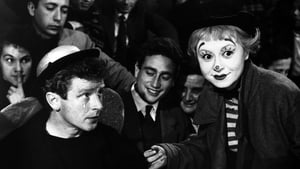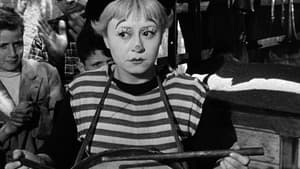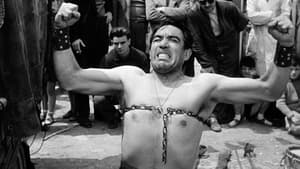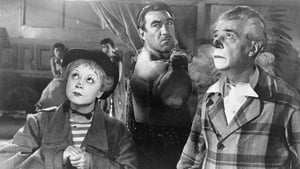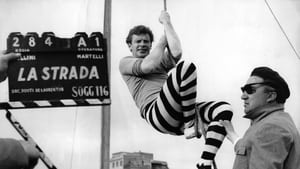Contact: [email protected]
Video Sources 0 Views
- Watch trailer
- La Strada Colorized


La Strada Colorized 1954: Best Cinematic Masterpiece in Living Color
Synopsis
[ez-toc]




Introduction
In the vast tapestry of old films, some cinematic gems stand the test of time, etching their indelible mark on the history of cinema. One such masterpiece is “La Strada Colorized,” an Italian film that first graced the silver screen in 1954. Recently, the film has undergone a transformative journey, reemerging in living color, offering audiences a fresh perspective on its timeless narrative. In this article, we will delve into the making of “La Strada Colorized,” its captivating storyline and characters, Federico Fellini’s visionary direction, and the controversial yet intriguing decision to colorize this cinematic classic.
Read Media File Transfer Agreement: Terms and Conditions
Read FAQ
The Making of La Strada Colorized
Premiering at the Venice Film Festival, “La Strada” faced both critical acclaim and production challenges that added to its mystique. Directed by the legendary Federico Fellini, the film presented a unique blend of drama and emotion, showcasing the raw beauty of post-war Italy. The hurdles faced during filming only added to the authenticity of the narrative, making “La Strada Colorized” a true testament to the resilience of old films and their creators.
Unveiling the World of La Strada Colorized: Storyline and Characters
At the heart of “La Strada Colorized” are two unforgettable characters – Gelsomina, played by the brilliant Giulietta Masina, and Zampanò, portrayed by the charismatic Anthony Quinn. The storyline weaves a poignant tale of their complex relationship, capturing the essence of Italian drama at its finest. Gelsomina’s innocence and Zampanò’s rugged demeanor collide, creating a narrative that transcends time. As the characters embark on an emotional journey, audiences are drawn into a world
of deep introspection and self-discovery, highlighting the complexities of human relationships.
Fellini’s Vision: The Directorial Style of La Strad Colorizeda
Federico Fellini’s directorial style is the beating heart of “La Strada Colorized.” Collaborating with his real-life wife, Giulietta Masina, and the esteemed Anthony Quinn, Fellini infused the film with a unique blend of realism and surrealism. His personal experiences and observations of post-war Italy seep into every frame, creating a visual and emotional tapestry that resonates with audiences even today. The synergy between Fellini’s visionary storytelling and the stellar performances of Masina and Quinn elevates “La Strada Colorized” to the realm of cinematic excellence.
Exploring La Strada Colorized: Themes, Symbolism, and Social Context
As with many influential Italian films, “La Strada Colorized” delves into profound themes and symbolism. Loneliness, identity, and the plight of marginalized individuals in society are explored with a depth that transcends the screen. The film becomes a mirror reflecting the social and cultural climate of post-war Italy, inviting viewers to contemplate the human condition and societal dynamics. In this exploration, “La Strada Colorized” solidifies its place not just as a captivating drama but also as a cultural touchstone.
The Controversy of Colorization: A Debate Revived
The decision to colorize old movies has always been a topic of debate in the film industry. Many argue that colorization compromises the artistic integrity of the original black-and-white versions, while others see it as a way to introduce classic films to new audiences. The controversy has been revived with “La Strada Colorized 1954,” prompting discussions about the ethical and artistic implications of altering the visual presentation of iconic films.
Restoring Beauty: The Colorization of La Strada Colorized
In the case of “La Strada Colorized,” the colorization process was undertaken with utmost care to preserve the visual authenticity and integrity of the original masterpiece. The decision to breathe new life into the film was driven by a desire to introduce it to modern audiences who might be deterred by black-and-white aesthetics. The restoration process involved meticulous attention to detail, ensuring that the essence of Fellini’s vision remained intact while embracing the vibrancy that color brings to the screen.
Revitalizing a Classic: The Impact of Color on Storytelling
The introduction of color to “La Strada” transforms the viewing experience, enhancing key moments and thematic elements in the film. Fellini’s use of symbolism and visual motifs takes on new dimensions, adding layers to the narrative that may not have been as pronounced in the original black-and-white version. Memorable scenes, such as Gelsomina’s encounters with the circus, now burst forth in a palette of emotions, inviting audiences to rediscover the film with fresh eyes.
The colorized version of “La Strada” has garnered mixed reviews, with some praising the enhanced visual appeal and others expressing concern about potential distortion of the director’s original vision. However, the impact of color on storytelling cannot be denied, and the colorized edition has sparked renewed interest in this cinematic classic.
Preserving Soundscapes: Nino Rota’s Music and Subtle Dubbing
Integral to the soul of “La Strada” is the iconic score composed by Nino Rota. The synergy between Rota’s music and Fellini’s visual storytelling creates a symphony of emotions that lingers in the hearts of viewers. Fellini’s approach to dubbing, often overlooked in discussions about the film, is a testament to his commitment to maintaining the authenticity of the performances. The meticulous attention to soundscapes further solidifies “La Strada” as a sensory masterpiece.
The Enduring Legacy of La Strada in Color
As “La Strada Colorized 1954” continues to carve its place in cinematic history, the enduring legacy of the original masterpiece remains unscathed. The colorized version adds a new chapter to the film’s journey, ensuring that it resonates with a diverse audience. The film’s status as a timeless masterpiece is further solidified, and the decision to embrace color serves as a bridge between generations, connecting the past and the present.
Should You Watch La Strada in Color or Black-and-White?
The debate between experiencing films in their original format versus alternative versions is a personal one. For purists, the black-and-white version of “La Strada” remains a sacred viewing experience, preserving the artistic integrity envisioned by Federico Fellini. On the other hand, the colorized edition offers a contemporary lens through which new audiences can engage with the narrative. The key lies in appreciating “La Strada” in both formats, allowing each rendition to illuminate different facets of the film’s beauty.
Where to Watch La Strada (1954) OnlineFor cinephiles eager to embark on the journey of “La Strada,” there are various streaming options available. Platforms such as Criterion Channel, Amazon Prime Video, and Hulu offer both the original black-and-white version and the colorized edition. Choosing the preferred format is a matter of personal taste, and having the flexibility to explore both allows audiences to appreciate the film’s nuances in diverse ways.
Other Must-Watch Films by Federico Fellini
Federico Fellini’s cinematic legacy extends beyond “La Strada.” Cinephiles eager to explore more of his distinctive style and storytelling prowess should consider immersing themselves in other notable works. Classics such as “8½,” “La Dolce Vita,” and “Nights of Cabiria” showcase Fellini’s ability to capture the human experience with unparalleled artistry.
Embrace the Beauty of Italian Cinema: Essential Classics to Explore
Italian cinema has a rich tapestry of classics that cinephiles should explore. Beyond Fellini’s works, delve into timeless masterpieces like Vittorio De Sica’s “Bicycle Thieves,” Sergio Leone’s “The Good, the Bad, and the Ugly,” and Roberto Benigni’s “Life is Beautiful.” These films offer a captivating glimpse into the evolution of Italian cinema, each contributing its unique brushstroke to the canvas of world cinema.
Conclusion
In conclusion, “La Strada Colorized 1954” stands as a testament to the enduring power of cinematic masterpieces. Whether experienced in the original black-and-white or the vibrant hues of color, the film continues to captivate audiences, inviting them into a world where the human spirit grapples with love, loss, and self-discovery. Federico Fellini’s vision, combined with stellar performances and a thought-provoking narrative, ensures that “La Strada” remains a timeless classic. As guardians of cinematic history, we must embrace both the traditional and the innovative, celebrating the beauty of old films in all their forms. Watch “La Strada” in living color or embrace its black-and-white allure — the choice is yours, and the magic of Fellini’s masterpiece awaits.
